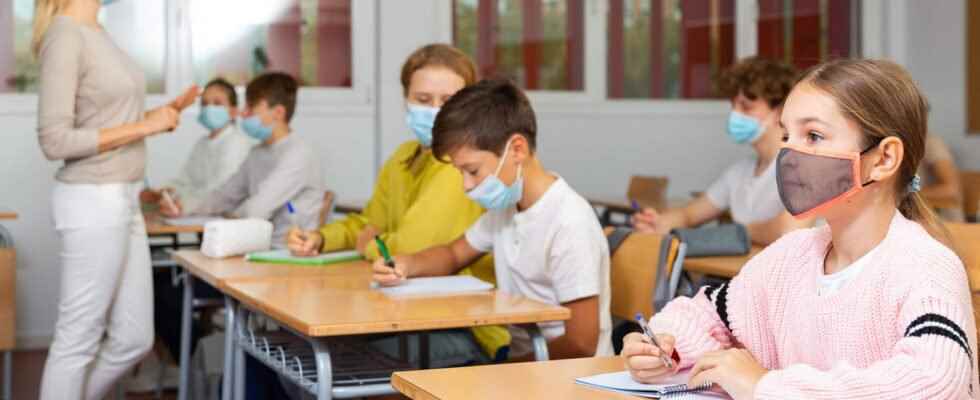Currently, only 20% of French schools are equipped with CO2 sensors. Yet they have benefits that go beyond fighting the coronavirus, air watchdog Atmosud said. These devices also reduce drowsiness and attention problems in children.
What are the benefits of CO2 sensors for students?
On January 31, the air monitoring body Atmosud and the “L’air et moi” federation recalled that CO2 sensors installed in schools had many health benefits for students. They allow, in fact, to alert on the too high concentration of carbon dioxide in a room, and therefore on the need to ventilate the room, an essential gesture to fight against the epidemic of Covid-19. But they have other advantages. Thereby, limiting the concentration of CO2 makes it possible to reduce the loss of attention and the drowsiness of the pupils. “Attention drops, headache problems, are linked to excessive CO2 concentrations Above 1,500 ppm (parts per million) of CO2 in the air, there is even a decrease in cognitive abilities“, also explained to the Parisian Laurent Jeannin, researcher at the University of Cergy-Pontoise and holder of a chair on the school of the future, Yet the number of CO2 sensors in schools remains largely insufficient as Jean-Michel Blanquer had recognized in early January. “We estimate that only around 20% of primary schools are equipped today. It is more in colleges and high schools but it is still totally insufficient… Remember that a sensor costs around 50 euros, that it is a competence of the communities and that the State has released 20 million euros for those who do not would not have the financial means to equip themselves“, had explained the Minister of National Education to the Parisian on January 2.
More CO2 sensors in schools?
The Ministry of National Education wishes indeed increase the installation of CO2 sensors in schools. “I have no doubt that we will go towards the equipment of all“, explained Jean-Michel Blanquer last December. A few days before the start of the school year, the Minister had already been in favor of the generalization of CO2 sensors in schools. These devices are essential for controlling air quality in classrooms and limiting the risk of contamination between students. Remember that the health protocol at school also provides ventilation of classrooms at least 15 minutes in the morning before the arrival of the pupils, during each recess, between lessons, at lunchtime and in the evening during cleaning, as well as a few minutes of ventilation every hour.
CO2 sensors allow you to measure the CO2 level in a room and therefore better control the air quality in an enclosed space. Because the higher this rate, the more the concentration of droplets increases. “Measuring the CO2 concentration using sensors makes it easy to assess the level of air renewal“says the Ministry of National Education, which recommends that each school be equipped”sensors (mobile or fixed) in order to determine the ventilation frequency required for each room or to check the proper functioning of the mechanical ventilation”.
Furthermore, the air exchange needed to limit the transmission of the virus depends on the number of students in the classroom, the duration of occupancy, the ventilation rate and the volume of the room. “The measurement of CO2 concentrations and the comparison with the threshold value of 800 ppm makes it possible to adapt the duration and frequency of ventilation to the specificities of the premises, their use and the local climatic conditions”, explains the ministry.
What about air purifiers?
We know that Covid-19 can be transmitted by aerosols, microdroplets suspended in the air. The air purifiers would block the transmission of the virus in the ambient air and therefore reduce contamination. A study commissioned by the Auvergne-Rhône-Alpes region from the Virpath laboratory has also shown that air purifiers equipped with high performance filters can capture more than 99% of Covid-19 viruses. The question then arises about the use of these devices in schools, where health protocols precisely emphasize ventilation of classrooms and premises.
Long before the Ministry of National Education called for the use of these air purifiers, the Auvergne-Rhône-Alpes region had mobilized 10 million euros to install them in schools and high schools in the region. A total of 2,407 devices have been installed in classrooms and school canteens. CO2 detectors have also been installed in several schools in Lille, Paris and other cities, but these are isolated initiatives and not responses to a national directive.
